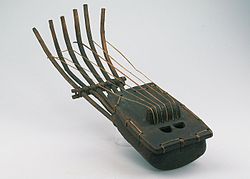Pluriarc
- View a machine-translated version of the German article.
- Machine translation, like DeepL or Google Translate, is a useful starting point for translations, but translators must revise errors as necessary and confirm that the translation is accurate, rather than simply copy-pasting machine-translated text into the English Wikipedia.
- Consider adding a topic to this template: there are already 1,848 articles in the main category, and specifying
|topic=will aid in categorization. - Do not translate text that appears unreliable or low-quality. If possible, verify the text with references provided in the foreign-language article.
- You must provide copyright attribution in the edit summary accompanying your translation by providing an interlanguage link to the source of your translation. A model attribution edit summary is
Content in this edit is translated from the existing German Wikipedia article at [[:de:Pluriarc]]; see its history for attribution. - You may also add the template
{{Translated|de|Pluriarc}}to the talk page. - For more guidance, see Wikipedia:Translation.
 | |
| Other names | bow lute, paata, mapu, luku, kissanga |
|---|---|
| Classification |
|
| Hornbostel–Sachs classification | 321.1 (Bow lute) |
| Related instruments | |
| Harp, Lute, Musical bow, Masenqo, Gusle, Igil, Krar | |
The pluriarc, also called paata, mapu, luku,[1] kissanga, and bow lute[2] is a stringed musical instrument of West Africa, classified as a type of lute. It has a hollow body and several curved, pliable necks made of reeds. The strings stretch from the necks to the bridge, which stands approximately 1.5 inches (38 mm) above the body.[1] The body may be round, rectangular, or triangular, and is usually made of light wood.[3] The top of the body can either be a separate board, bound or nailed to the lower part, or made from the same piece of wood as the rest. A hole may exist on the underside that can be opened or closed to change the timbre.[4]
It is played by plucking the strings, which are usually open but sometimes contain a stop. The strings may be plucked with fingers or a plectrum.[2] The flexible nature of the necks means the instrument cannot be tuned precisely.[3]
Pluriarc designs have been characterized into three types by country of origin: those of southwestern Africa, central west Africa, and western Nigeria.[1]
References
- ^ a b c "pluriarc · Grinnell College Musical Instrument Collection". omeka1.grinnell.edu. Retrieved 2019-10-15.
- ^ a b "Pluriarc | musical instrument". Encyclopedia Britannica. Retrieved 2019-10-15.
- ^ a b Blench, Roger (31 July 2009). "A guide to the musical instruments of Cameroun: classification, distribution, history and vernacular names" (PDF). Kay Williamson Educational Foundation. Retrieved 2019-10-16.
- ^ "Longombe". music.africamuseum.be. Retrieved 2019-10-16.
External links
 Media related to Bow lutes at Wikimedia Commons
Media related to Bow lutes at Wikimedia Commons












